Sri Lanka is facing second successive resolution in as many years at the UN Human Rights Council (UNHRC) this month. Exactly last year at the 19th session of the UNHRC, a US-sponsored resolution was passed against the island state.
Backed by 24 countries, including France, Norway and India, the resolution placed three requests for Sri Lanka:
- To “implement the constructive recommendations made in the report of the Lessons Learnt and Reconciliation Commission” (LLRC) and to “initiate credible and independent actions to ensure justice, equity, accountability and reconciliation for all Sri Lankans.”
- To “present a comprehensive action plan as expeditiously as possible detailing the steps the Government has taken and will take to implement the LLRC recommendations and also to address alleged violations of international law.”
- To “accept, advice and technical assistance from the Office of the United Nations High Commissioner for Human Rights and relevant special procedures mandate holders on implementing the above-mentioned steps, and requests the Office of the High Commissioner to present a report on the provision of such assistance to the Human Rights Council at its 22nd session”
One year down the line, how far these requests were taken forward by Sri Lanka? It would be prudent if the upcoming voting depends on the evaluation of the progress made and a clear plan of action for the future. There are two aspects to the debate: one is fixing accountability for excesses committed by the Sri Lankan forces during ‘Eelam War IV’; and the other is the way forward in the form of post-war reconciliation in the island.
On the question of accountability, the Army has appointed a Court of Inquiry as an initial fact-finding mission. The five-member body in its first part of report submitted on 15 February 2013 concluded that the Army “took all the precautions to avoid civilian casualties and all those who came under the control of the Sri Lanka Army, including surrendered/captured LTTE cadres, were treated humanely observing the IHL [international humanitarian law] to the letter.” On the other hand, it blamed the LTTE for “using of civilians as Human Shields, summary executions of civilians who attempted to escape to army lines, forced conscription of children for combat purposes etc.” and the international community for failing “in their duty to stop the war crimes committed by the LTTE terrorists.” While there is no doubt about the LTTE’s involvement, the Army’s total denial of the killings is perplexing. According to the Report of the Secretary-General’s Internal Review Panel on United Nations Action in Sri Lanka submitted in November 2012, “most casualties were caused by Government fire and included attacks on UN premises and hospitals.”1 Even if the UN’s report is discounted as an exaggeration and consider that both sides were equally responsible for the killings then the Army would still be responsible for at least 20,000 of estimated 40,000 killings. Fresh video evidences on the killing of 12-year-old son of the LTTE’s leader Prabhakaran has made the task of the Sri Lankan delegation at the UNHRC bit more difficult. The call, therefore, has been for an independent international enquiry.
On the implementation of LLRC recommendations, some headway has been made but results on the ground are not encouraging. Colombo presented the National Action Plan in July 2012 listing out implementation of recommendations according to Activity, Key Responsible Agency, Key Performance Indicator and Timeframe. A Task Force (headed by the Secretary to the President) was appointed to oversee the implementation of the Action Plan. But there were too many implementing agencies identified without clear-cut budget breakups.2 Surprisingly, Provincial Councils and other local bodies, which are closer to the people and which are in a better position to implement the recommendations, are totally left out.
Though the United States acknowledged “some progress” in the LLRC implementation, some of the undemocratic acts like impeachment of Sri Lankan Supreme Court’s Chief Justice and the passage of Divinugema Act (that encroached on Provincial Councils on development) turned the tables against the island state. Therefore, Washington that is once again sponsoring the resolution has indicated that the new “resolution will ask the Government of Sri Lanka to follow through on its own commitments to its people, including implementing the constructive recommendations from the report by Sri Lanka's Lessons Learnt and Reconciliation Commission.”
India is once again in a dilemma. On the one hand, it does not wish to support an “intrusive” resolution against Sri Lanka. At the same time, New Delhi wants Colombo to take reconciliation and devolution seriously. Pressures from Tamil Nadu in this regard are difficult to ignore. Tempers are higher this time with even ruling members of Parliament from Tamil Nadu joining the others. India’s stand is keenly watched by fence-sitters at the UNHRC before taking a decision on the voting. With countries like China and Russia not being part of the Council this year, India’s influence as member of the UNHRC is going to be important. Last year, India, though voted for the resolution yet it played a significant role in toning down the original draft making it more “non-intrusive and non-judgemental”. This year, India has so far not divulged its stand on the resolution. However, New Delhi has advised Colombo to engage directly with Washington “on the draft resolution and aim for a mutually acceptable outcome.” A consensual resolution acceptable to all would be easier when it comes to implementation. Outside pressure has its own limitation and an expiry date. On its part, Sri Lanka should realise that military defeat of the LTTE was not the end of all. Only a political settlement that addresses grievances of minority communities is the gateway to lasting peace in the island.
End notes
- Full text of the Report is available at http://www.un.org/News/dh/infocus/Sri_Lanka/The_Internal_Review_Panel_report_on_Sri_Lanka.pdf, accessed on 28 February 2013.
- The action plan lists the Ministry of Defence, Attorney-General’s Department, Department of Census and Statistics, Police Department, Legal Aid Commission, Ministry of Justice, Information and Communications Technology Authority, Ministry of Public Administration and Home Affairs, Ministry of External Affairs, Ministry of Education, Commissioner General of Rehabilitation, Ministry of Lands, Ministry of Resettlement, the Presidential Task Force for the North and East, Ministry of Mass Media and Communication, the Press Council, Ministry of Religious Affairs, the Department of National Planning, Ministry of Rehabilitation and Prison Reforms, Ministry of Health, Ministry of Child Development and Women’s Affairs, Ministry of Plantation Industries, Ministry of National Languages and Social Integration, University Grants Commission, Ministry of Higher Education, Ministry of Sports, and the Ministry of Cultural Affairs as implementing agencies.
Published Date: 6th March 2013


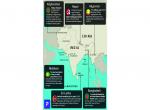
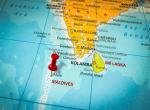

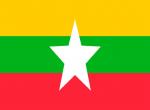
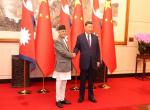
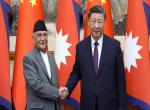
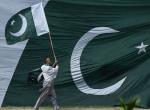
Post new comment